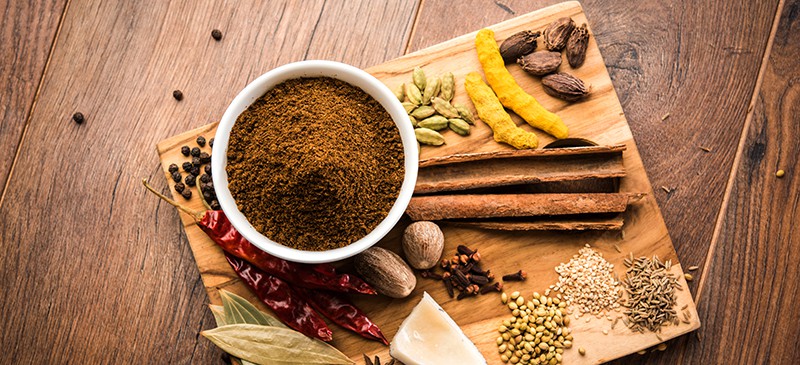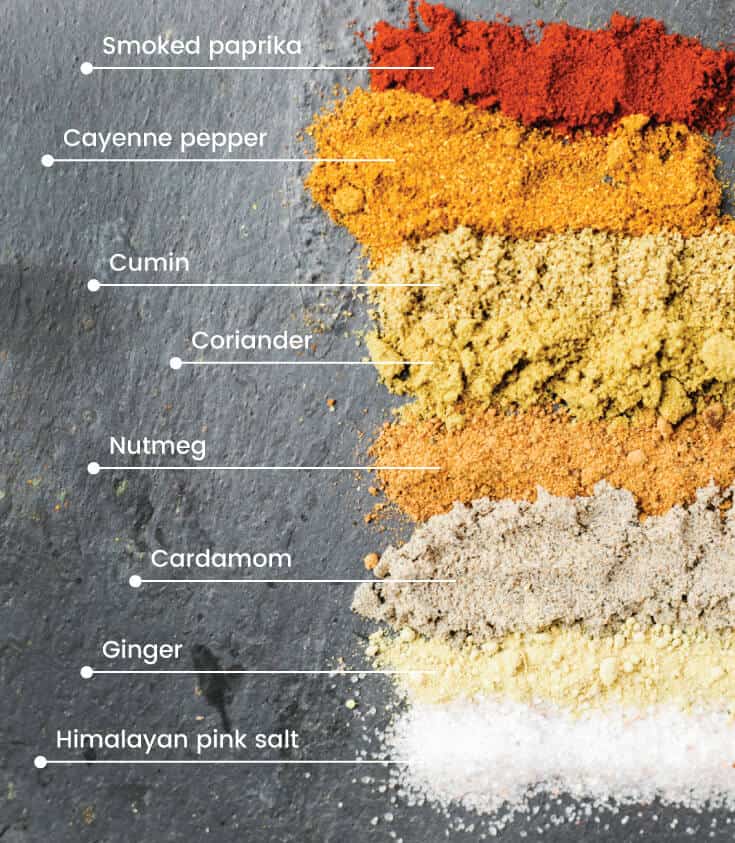This Dr. Axe content is medically reviewed or fact checked to ensure factually accurate information.
With strict editorial sourcing guidelines, we only link to academic research institutions, reputable media sites and, when research is available, medically peer-reviewed studies. Note that the numbers in parentheses (1, 2, etc.) are clickable links to these studies.
The information in our articles is NOT intended to replace a one-on-one relationship with a qualified health care professional and is not intended as medical advice.
This article is based on scientific evidence, written by experts and fact checked by our trained editorial staff. Note that the numbers in parentheses (1, 2, etc.) are clickable links to medically peer-reviewed studies.
Our team includes licensed nutritionists and dietitians, certified health education specialists, as well as certified strength and conditioning specialists, personal trainers and corrective exercise specialists. Our team aims to be not only thorough with its research, but also objective and unbiased.
The information in our articles is NOT intended to replace a one-on-one relationship with a qualified health care professional and is not intended as medical advice.
Garam Masala Benefits Digestion, Immunity and More
February 6, 2017

You may have tasted it before, but do you know the answer to the following question: What is garam masala? Spoiler alert, it’s not a meal or dish — it’s actually a blend of spices.
Garam masala may originate in India, but in terms of what spices actually go into a garam masala recipe, the variations are all over the map. Often containing more than 10 different spices, garam masala is loaded with health benefits no matter its ingredients. The goal of this mixture of spices is not to set your mouth on fire, but rather to provide a rich, warming flavor to things such as hummus recipes.
An amazingly complex blend of delicious spices, garam masala truly makes any dish it’s added to that much more interesting. You also get the health benefits of each and every spice that’s used to create it. In general, spices are loaded with powerful disease-fighting and health-promoting antioxidants. For instance, garam masala contains many spices that are believed to help prevent cancer. (1) It’s pretty awesome how a sprinkle of a spice mix could be so impressively good for your health.
What Is Garam Masala?
Garam masala, pronounced gah-RAHM mah-SAH-lah, is a mix of ground, typically dry-roasted spices native to India. Garam is actually Indian for “warm” or “hot,” which is perfect since garam masala is known for creating a warmth both internally and externally. What is masala? Masala is Hindi for “spice.” It’s used to describe any of the various spice mixes used in Indian cuisine. In addition to India, this warm spice mix is also commonly used in Pakistan and other South Asian cuisines.
Not all garam masala recipes are created equal. There are a plethora of variations often depending upon the Indian region or village of origin, the family recipe passed down through generations, or the whim of the individual creator. Max numbers vary, but the spice blend has been said to sometimes contain more than 30 ingredients.
What spices are commonly in garam masala? A traditional recipe often contains black peppercorns, cinnamon, cardamom, cloves, mace (or nutmeg) and cumin. Other common ingredients include fennel, coriander and bay leaves. Whatever spices are used, they’re all carefully combined and blended for a balanced flavor, which is warming and somewhat sweet but totally sugar-free.
Garam masala can be made by dry roasting the spices and then grinding them into a powder, or it can be made without dry roasting. (2) When ground, the garam masala spices are gently heated until they release their aroma and then they’re ground together into a powder to be used mainly as a finishing spice. When used whole, these spices are called khada masala and are added to hot oil to release their flavors before other recipe ingredients are added. (3)
Some say garam masala originated in Northern India where the winters are cold. The idea for curry powder, which started being commercially made in the 1780s, was likely inspired by this mix of spices. Curry powder made it quicker and less costly to flavor traditional Indian dishes. Garam masala also has a long history in traditional Ayurvedic medicine.
Health Benefits
1. Improves Digestive Fire
According to Ayurvedic medicine, garam masala is properly named for its ability to heat up the body or improve digestive fire. The foundation of this 5,000-year-old system of natural healing is agni or digestive fire. According to Ayurveda, you need to provide your body with the right type and amount of warming foods to maintain optimal digestive fire.
Garam masala is said to do this by increasing the consumer’s body temperature and consequently raising metabolism as well. This prevents sluggish digestion and the build of of toxins in the body that result from digestive fire not being ideal. Garam masala also brings all the six rasas (tastes) into a dish to promote a balancing effect on the consumer. (4)
2. Wards Off Constipation
Since garam masala improves digestion, it’s not surprising that it’s also been shown to decrease digestive transit time, which is excellent for decreasing the likelihood of constipation. This is hugely important to our health since constipation is one of the main ways that our bodies naturally detoxify on a regular basis.
According to a small study published in the journal Tropical Gastroenterology, consumption of garam masala led to a faster digestive transit time in well-nourished, healthy human adult volunteers. Meanwhile, consumption of a spice-free meal was associated with a tendency toward a slower gastrocolic transit. (5)
3. Cancer Preventer
In general, spices are associated with cancer prevention. One study specifically looked at garam masala and the possibility of it being a natural anticancer substance. This study, published in the journal Nutrition and Cancer, evaluated the effects of garam masala intake on animals for just 10 days. The researchers found that its consumption led to a significant and dose-dependent desirable change in the levels of detoxification system enzymes. These findings suggest that garam masala acts as a natural cancer preventative agent by encouraging bodily detoxification. (6)
Animal research has also shown a reduction in tumors as a result of consuming garam masala. (7) This is not that surprising, since many of the spices that make up this mixture are cancer-fighting foods themselves.

4. Fights Diabetes
Pretty much every garam masala contains cinnamon, a true super spice. The health benefits of cinnamon are scientifically proven to be numerous. Cinnamon’s ability to help ward off diabetes and naturally lower blood sugar in diabetics is really impressive. Multiple scientific studies have demonstrated cinnamon’s potential ability to help lower blood sugar levels.
In addition, it also may likely improve sensitivity to the hormone insulin, which is the vital hormone needed for keeping blood sugar levels balanced. (8)
5. Overall Health Booster
In addition to being an antioxidant, anti-inflammatory, antidiabetic, antimicrobial, anticancer, lipid-lowering and cardiovascular disease-lowering compound, cinnamon has also been reported to have activities against serious neurological disorders like Parkinson’s disease and Alzheimer’s disease. (10) But cinnamon isn’t the only star in this concoction.
According to Dr. Lipi Roy, an internal medicine physician at Harvard-affiliated Massachusetts General Hospital, “Spices are underused, but it would be very easy to take advantage of them and improve health.” (11) Garam masala always contains a mixture of spices, sometimes 10 or maybe even 30. No matter what ingredients are used, consuming it gives you instant access to the health benefits of each and every spice used to create the magical mixture. In addition to cinnamon, we’re talking about seriously health-promoting spices like cardamom, cloves and cumin, just to name a few of the likely ingredients.
So keep eating your fruits and vegetables, but don’t forget about the small but mighty spices (and herbs) that you should ideally incorporate into your diet daily. I love how garam masala makes it so easy to consume so many different spices in a single meal or snack.
How to Use
Are you wondering where to buy garam masala? Well, you can make your own at home (recipe in the next section), or you can purchase it pre-made. Any Indian market should carry it as well many chain supermarkets. You can also purchase it online if you don’t need it immediately. Some sellers offer the pre-ground mixture as well as a whole garam masala seed mix.
Garam masala is at the heart of most Indian dishes. It’s typically added to a dish toward the end of cooking or sprinkled on top right before serving because it can become bitter if cooked for too long. Think of its usage similar to the way you would use fresh herbs. The spice blend is a perfect addition to curries, lentils and soups. I also love sprinkling it on scrambled eggs. In Bengali cooking, the mix is commonly used in meat dishes but rarely in vegetable dishes.
Some garam masala recipes instruct you to grind the spices with water, vinegar and coconut milk to make a paste. Other recipes might call for the addition of small amounts of asafoetida, star anise, stone flower (dagadphool) and kababchini (cubeb).
Not a fan of garam masala or just don’t have it on hand for a recipe? A recommended garam masala substitute is to combine one part cumin mixed with a quarter part allspice. Other sources recommend using the same amount of curry powder as an acceptable substitute. Curry powder typically tastes great in most Indian dishes and also provides a nice warmth.
Garam masala should be stored in a cool, dry place for a maximum of six months.
Garam Masala Recipe
Time: 2 minutes
Serves: 1 dish
INGREDIENTS:
- 1.5 teaspoons ground cumin
- ½ teaspoon ground cinnamon
- ½ teaspoon ground coriander
- ½ teaspoon ground cardamom
- ½ teaspoon ground nutmeg
- ½ teaspoon ground smoked paprika
- ½ teaspoon ground cayenne pepper
- ½ teaspoon fresh black pepper
DIRECTIONS:
- Mix and grind all spices and herbs together.
- Garam masala should ideally be made in small batches to retain freshness.
Some other garam masala recipes include:
Allergies
If you’re allergic to any of the spices in a garam masala mixture, you should not consume it. Read labels carefully since what exactly goes the mixture varies greatly.
Final Thoughts
Adding garam masala to any dish makes it a much more invigorating and warming experience. You can add it to soups, stews, meat dishes and vegetarian dishes. In reality, the options are endless because you can sprinkle it on whatever you like. It’s even a tasty and adventurous addition to a healthy oatmeal raisin cookie recipe.
The awesome thing about this complex spice mix that isn’t just tasty — it’s also loaded with health-promoting benefits from cancer prevention to improved digestive function. For example, it’s been shown to ward off constipation and makes a great addition to any diabetic diet plan, in addition to boosting immunity overall.




